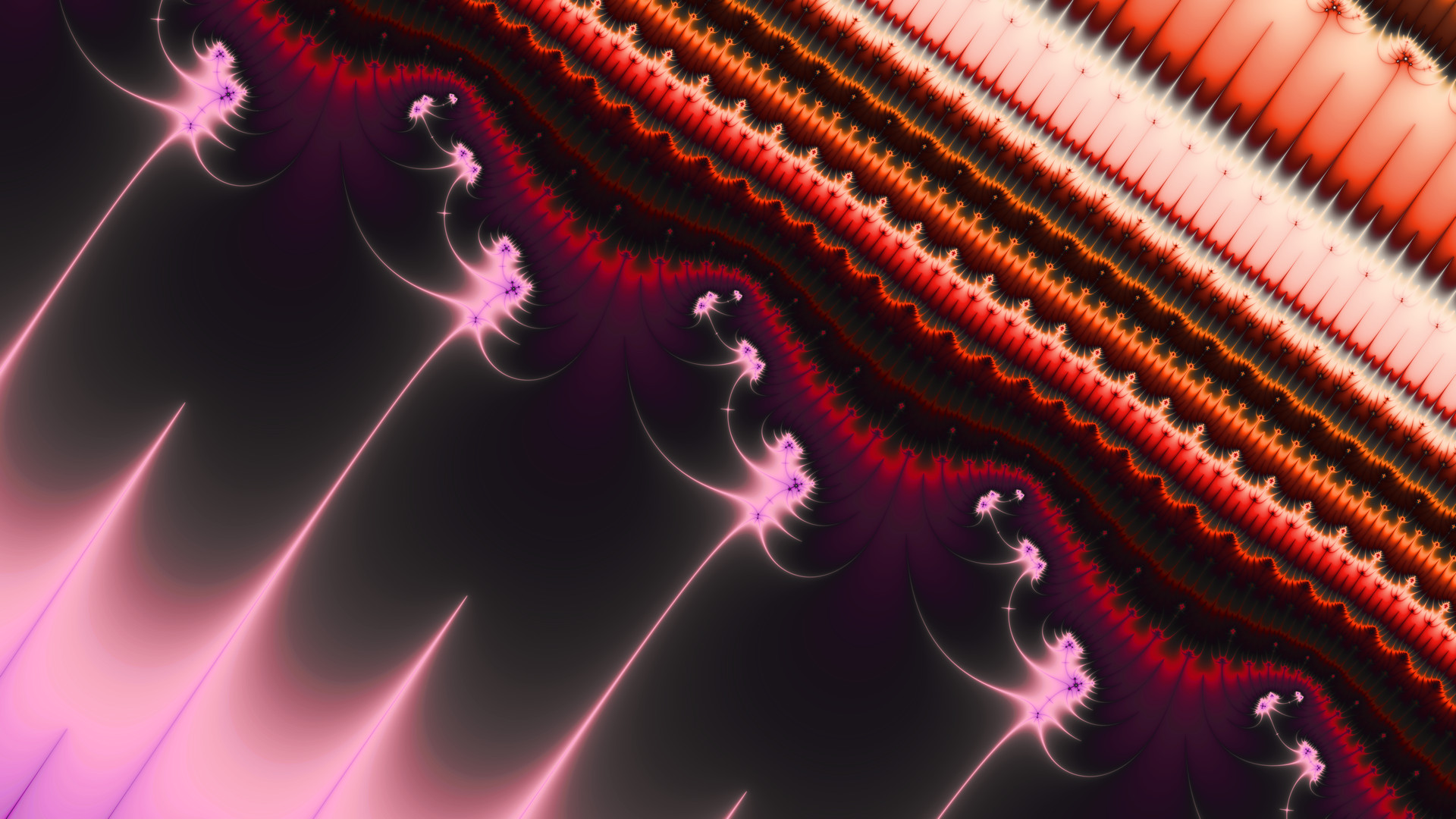Filamentous http://www.fractalforums.com/index.php?action=gallery;sa=view;id=15698
http://www.fractalforums.com/index.php?action=gallery;sa=view;id=15698A Mandelbrot deepzoom calculated with Nanoscope.
This image is close to a very tiny minibrot (4x10
-289 or so wide) and has magnification 10
-291.
Nanoscope's optimizations for working mostly with just ordinary doubles without extended exponent precision had caused problems zooming a few more times into the center of this image, but no longer. There is now a bailoutlike test in the inner loop to check for the doubles to become "denormalized". If necessary, the iteration is redone and the next performed with a rescaled exponent, before returning to the previous scale, to get over a "hump" caused by a reference orbit point of very small magnitude. If the reference orbit point is so small as to itself denormalize or even snap to zero when converted to a double, the iteration is instead done using 16-bit arbitrary precision, which is slower but has nigh-unlimited exponent range, using the arbitrary precision version of that reference orbit point.
These changes appear to have fixed the deeper images below this zoom that I was using as test cases for debugging this behavior. Most iterations are still done using just a small number of doubles with normal exponent range.
Unfortunately, there are still some things to tweak in the automatic glitch correction, so Nanoscope is still not ready for prime time. But progress is still being made.